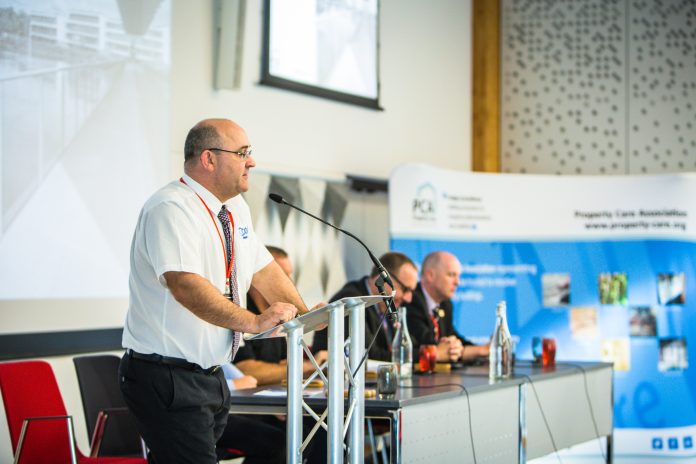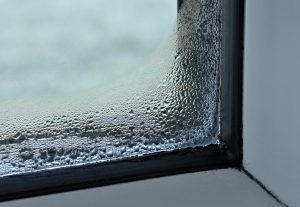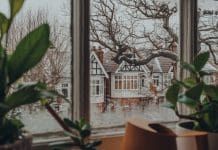
Dave Cook, chair of the Property Care Association’s Residential Ventilation Group, sets out the trade body’s work in highlighting the issue of effective ventilation and its relevance to the construction and property sectors
The Property Care Association is pulling out all the stops to put the issue of effective ventilation on the radar.
With initiatives including a new Residential Ventilation Group (RVG) and a successful two-day conference, as well as the launch of new training programmes, guidance notes and codes of practice, the trade body has already taken significant steps to get its message across – namely that inadequate ventilation is a major driver in causing damp in buildings.
Moisture held in the air has always been of great importance to all surveyors.
And while the ventilation industry has moved a very long way to satisfy the needs of housebuilders, people that have mould problems in older houses and flats still struggle to find practitioners who can provide detailed diagnostic evaluation followed up with accurate advice on improving ventilation.
Surveyors can provide advice on moisture production, heating and ventilation but usually the job of designing and specifying ventilation is passed to an electrician. It’s clear that approach often fails to resolve problems.
A clear understanding of the building, based on accurate diagnostics investigations and a knowledge of why the house is in moisture imbalance, is critical.
Any improvements to ventilation must draw on and complement a building’s ability to handle moisture, as well as the needs of the occupants. These factors – seldom, if ever, considered by a jobbing electrician – are critical if a home is to be kept permanently mould-free.
As such, the PCA created the new Residential Ventilation Group (RVG) as a sector of membership dedicated to providing homeowners with a point of reference to find professionals who can understand the internal environment of their home and specify ventilation measures accordingly.
Ultimately, PCA members understand the consequences of high humidity in homes and deal with the consequences of poor air quality, condensation, dampness and mould every day.
To secure the Ventilation Contractor membership of the RVG group, applicants go through a similarly rigorous application process as for other sectors of PCA to demonstrate their technical competence and service delivery.
Reacting to a new generation issue
So why does the PCA place such importance on the subject? Well, residential ventilation is critically important to tackle problems emerging in a new generation of humid homes, which our members are increasingly encountering.
A number of factors are contributing to the rising trend, predominately linked with modern living – including increased levels of occupation and rising fuel costs, as well as a drive to make homes more energy efficient.
Efforts to reduce air leakage through draught-proofing and retrofit insulation, as well as the changing climate patterns featuring warmer, wetter weather, are also of significance.

A platform for debate and solutions
We wanted to air this issue among construction and property professionals and so in June this year, the PCA held a unique two-day event, which brought together national and international perspectives on the subject.
The International Residential Ventilation & Preservation of Buildings Conference took place at The Slate, University of Warwick.
A measure of the interest in this relatively new area was the fact that, to accommodate the significant interest shown in the subject, the event moved from the PCA’s traditional one-day property care conference format to a two-day event this year.
Speakers and panellists included representatives from RICS, the University College London Institute for Environmental Design & Engineering (UCL IEDE), UK Centre for Moisture in Buildings and Bangor University.
An update was also given on the pioneering work being carried out under the PCA’s Knowledge Transfer Partnership with UCL IEDE, which involves a substantial research programme to monitor moisture levels in homes.
And Dr Fernanado Sarce-Thomann from Universidad Mayor, Chile, gave an international perspective on acceptable limits of moisture in homes.
The event opened up a great deal of debate and discussion and provided a fascinating insight overall. Feedback from delegates was that the subject of ventilation was one that for too long has been overlooked and was one that was going to rise in priority in their organisations.
Taking the initiative
Training and best practice is at the core of the PCA’s approach and at the conference, we launched a new programme to help develop the skills of surveyors involved with homes that could be affected by dampness resulting from inadequate ventilation.
Evaluating Ventilation in Existing Buildings has been created to give professionals the skills and confidence to make informed evaluations of ventilation in homes. This one-day course is aimed at those already involved in surveying buildings, who recognise that understanding the way buildings deal with airborne moisture is becoming as important as dampness in the walls.
It provides delegates with the knowledge and skills necessary to identify and understand background infiltration and fixed ventilation, as well as the evaluation of the effectiveness of ventilation systems 1-4 as defined in Approved Document F of the Building Regulations.
Students will also be taught how to use their informed site observations to assess the risk and understand the implications of moisture-related problems.
It is quite clear from the work we’ve been involved in in recent months that it is becoming essential for anyone that inspects buildings to understand the significant role that ventilation plays in delivering comfortable, healthy and safe homes.
This new training course delivers the knowledge that surveyors must now have.
Further resources
More details on Evaluating Ventilation in Existing Buildings can be found at: https://www.propertycare.org/training-qualifications/pca-surveyor-training/surveying-of-residential-ventilation-systems
The PCA has developed a list of PCA Residential Ventilation Technical Guidance documents and Codes of Practice for free download. The documents are aimed at offering guidance, not only to property professionals, contractors and surveyors but also to insurers and their agents and members of the public. They can be viewed at: https://www.propertycare.org/professionals/technical-documents/residential-ventilation-document-library/
The PCA has also produced a video offering a comprehensive overview of the issues faced. Featuring interviews with academics at University College London Institute for Environmental Design & Engineering (UCL IEDE), the short film is available to view at: http://www.property-care.org/professionals/moisture-buildings/













